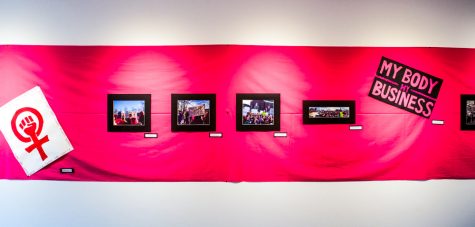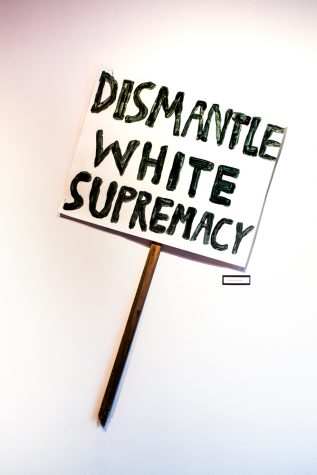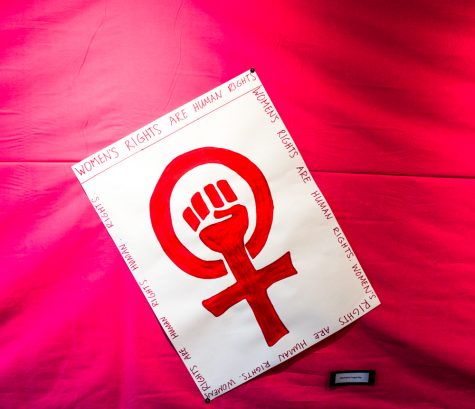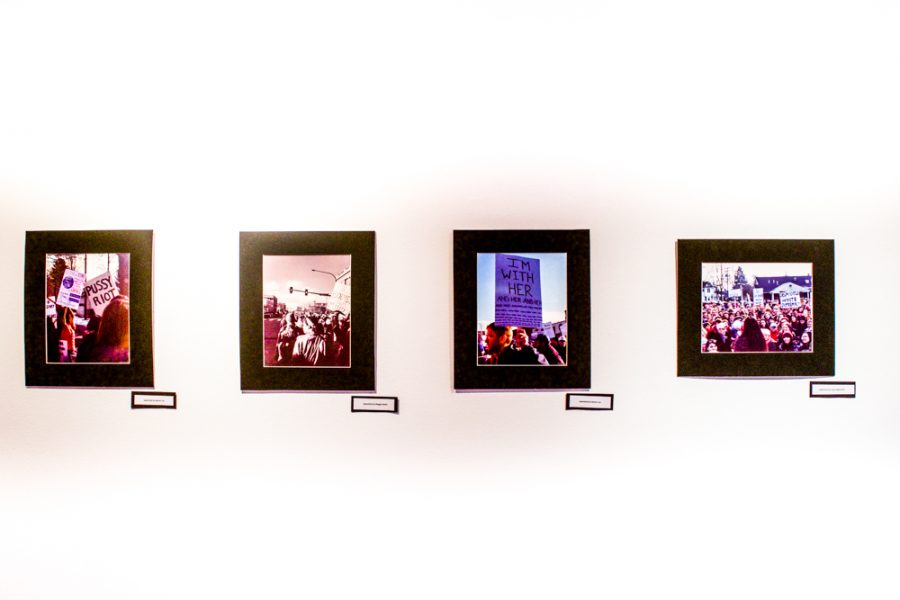Stevens Gallery hosts “Women’s March on Walla Walla” exhibit
February 23, 2017
With hot pink fabric against white walls, the Women’s March Exhibit opened up in the Steven’s Gallery in Reid Campus Center on Feb. 11, where it will remain until Feb. 24. The exhibit centers on the march that occurred in Walla Walla on Jan. 21, a sister march in support of the Women’s March on Washington.
Sophomore Rachel Loe, who curates the gallery under Student Activities, organized the exhibit with an emphasis on the event’s historicity.
“[As] a history major . . . it struck me often and loudly that this was a piece of history being made,” Loe said.

To make a composite of this historical moment, Loe placed documentary evidence, such as signs created and photos taken by Whitman student participants of the march. Between the two, the exhibit showcases the ideas and beliefs brought forth in the Women’s March – everything from Black Lives Matter to the Pussy Hat. While the images show the size of the march (upwards of 2,000 people attended), Loe gestures toward the signs as a focal point of the exhibit.
“Not only is it . . . an artifact, it’s also something that came out of people’s brains when they were thinking about what mattered to them,” Loe said.
In an attempt to contextualize the Women’s March within the history of Walla Walla, Loe decided to include material from the Penrose Library archives. With the help of Melissa Salrin, the Archival and Special Collections Librarian, Loe gathered documentation of Whitman student protests, rallies and marches on campus.

Connell Boken, a history and art history double major, also helped Rachel gather the archival material. Out of the material, Boken indicated that the image of a Selma march at Whitman, organized to support the famous Selma-to-Montgomery march of 1965, specifically parallels the Women’s march. Although it was not called a sister march at the time, Boken chooses to categorize the Selma march at Whitman as such because of the purposes they both served.
“We’re hours away from Seattle, [but] we are all still needing to participate in . . . politics,” Boken said.
Due to Walla Walla’s physical seclusion, “sister marches” are important avenues for the Walla Walla community to connect with larger political groups and movements across the nation. This historical contextualization is important to Boken, who references the past as something to acknowledge and learn from.
“There really needs to be an acknowledgment of what’s come before, before we can move forward,” Boken said.
Salrin, who helped Loe and Boken gather archival material, suggests that archives play a role in this glance at the past.
“They [archives] provide the space to capture and tell the stories of our daily lives and enable people in the future to reflect on and understand how we could possibly right historical wrongs,” Salrin said.

The future is integral to the greater work of the Women’s March organization. In the 100 days following the Women’s March on Washington, the group aims to identify and implement ten actions on individual and institutional levels. As an extension of the greater projects of the Women’s March, Loe sees the Women’s March Exhibit in the Steven’s Gallery as a follow-up.
“You have your protest and then what?” Loe asked.
By placing the past and present in conversation with one another, the exhibit gestures towards the notion of the future. To continue following up, Loe wants to see more shows that showcase student voices on political issues, in the hope that people who don’t usually attend art galleries make their way in.





